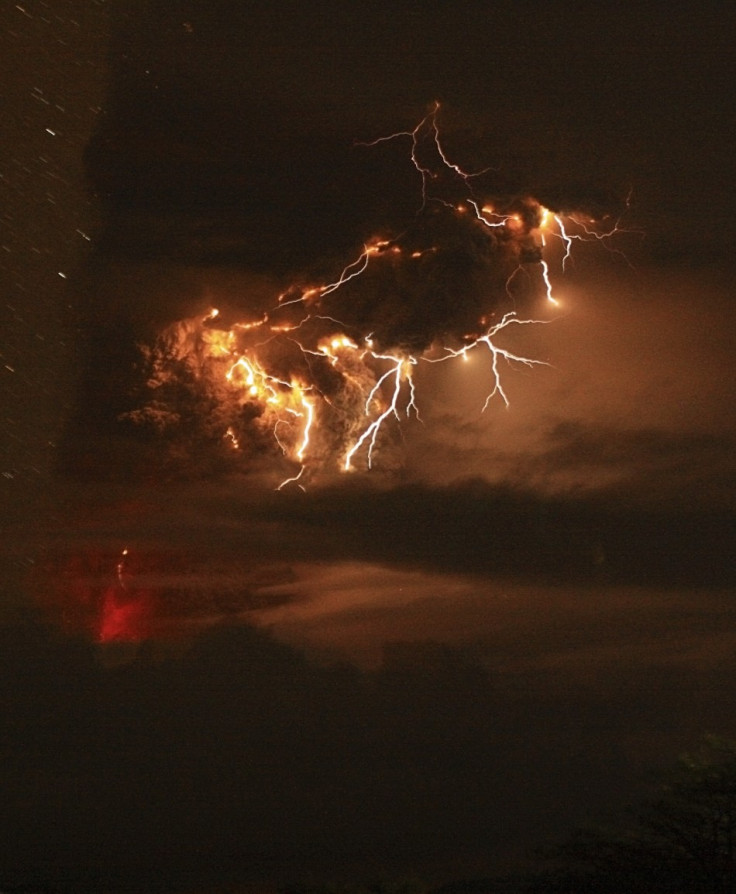Iceland Katla Volcano Eruption: Most Devastating Volcanoes to Hit the Planet
News has recently broken out that the Katla volcano in Iceland could be about to erupt, with the potential aftermath likely to cause global damage.
The volcano, which erupts roughly every 80 years and has not seen one since 1918, could melt the surrounding frozen surfaces that surround it and send billions of water into the neighbouring Atlantic Ocean.
If this does happen, the effects of which could be felt all across the globe, as rising sea levels potentially having a devastating effect on coastal cities and islands.
Below are a list of some of the most catastrophic volcanos that have occurred throughout Earth's existence that have had a profound effect across the globe.
Lake Toba
Occurring sometime between 69,000 and 77,000 years ago in Sumtra, Indonesia, the Lake Toba 'supereruption' is recognized as one of the largest eruptions the world has ever seen. So big in fact, it is thought to have disrupted human evolution and plunged the planet in to a 6-10 year volcanic winter as surface temperature falling between 3 and 5 degrees Celsius.
The eruption deposited a 15 centimetre layer of dust across the whole of South Asia and also reached the South China Sea and Arabian and Indian Ocean.
The 'genetic bottle neck' theory claims the eruption caused the human population to drastically decrease to somewhere between 3,000 and 10,000 and that all of humans alive descend from this small population.

Krakatoa
In 1883, the Krakatoa volcano erupted with a force four times greater than the biggest nuclear bomb ever detonated. It completely destroyed the Indonesian island and the eruption could be heard from as much as 3,000 miles away. It is claimed that if you were unlucky enough to be within 10 miles of the explosion, you would have gone deaf. The shockwave in the aftermath of the eruption reverberated seven times around the globe.
The explosion caused the temperature of the Earth to drop 1.2 degrees Celsius and weather patterns continued to be chaotic for years, not returning to normal for another five years.
Tambora
Another mammoth Indonesian volcano, a series of explosions from April to June in 1815 altered the whole world in its aftermath and caused the worst famines in the US and Europe in the 19<sup>th century.
The resulting ash cloud which occurred after the eruption produced what is known as 'volcanic winter' - where volcanic ash and sulphuric acid block out the sun, resulting in frost and snowfalls appearing in June in New York and New England.
Laki
Not only was the huge eruption of this Icelandic volcano in 1783 responsible for killing a quarter of the Icelandic population because of the resulting famine, the devastating effects were felt all across Europe and even reached America.
An estimated 120,000,000 long tonnes of sulphur dioxide, about three times the total annual European industrial output in 2006, was emitted when the volcano erupted, causing the summer of 1783 to be the hottest on record and killing an estimated 23,000 British people through poisoning.
Conversely, the winter of 1974 in North America was one of the coldest on record as a result of the eruption, with even the Gulf of Mexico being frozen over.
Iceland Volcano Fears Eruption Will Cause Atlantic Disaster
Lake Taupo
The Oruanui eruption of New Zealand's Taupo volcano was the largest the earth has seen in the past 70,000 years, occurring 26,500 years ago.
The eruption spewed out enough lava to cover all of Europe in a two-inch layer of magma, with the Earth's climate taking nearly 17,000 years to return to pre-eruption status.
Santorini
The Santorini eruption, also referred to as the Minoan eruption or the Thera eruption, was so catastrophic that it even had mythical story based on it.
Occurring sometime in the mid-second millennium BCE, the eruption was one of largest ever recorded devastated the island of Santorini (Thera) and may have caused immense turmoil in Egypt. It also completely destroyed the city of Akrotiri, which reportedly was in inspiration for Plato's story of Atlantis.
Siberian Traps
In what is easily the most destructive volcano ever erupted, the Siberian Traps erupted at the end of the Primerian era around 150 million years ago causing the worst mass extinction the world has ever seen, wiping out nearly 90 per cent of all life on Earth.

© Copyright IBTimes 2025. All rights reserved.






















